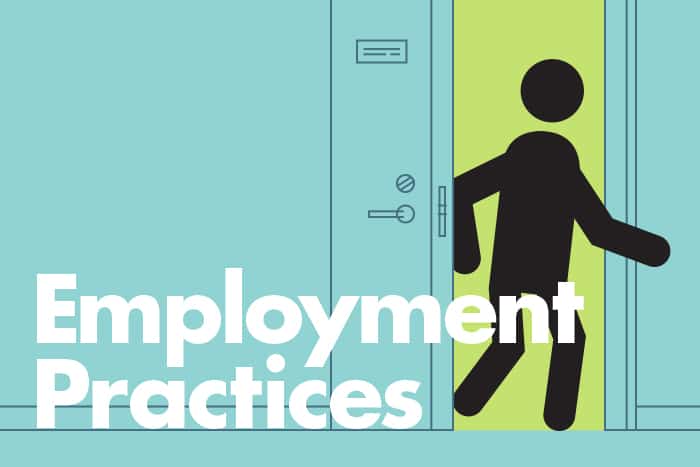Every employee’s employment life cycle ends eventually, whether due to resignation, retirement, termination or other reason. In the dental office, any employee who separates should do so in a structured and professional manner with minimum disruption to the patients, staff and practice. Still, depending on what triggers an employee’s departure, separation can be an awkward situation for employers to navigate. Such discomfort can be lessened if clear policies and practices are in place.
In California, the employment arrangement is considered “at-will,” which means that in the absence of a contract, both the employer and the employee are free to end the employment relationship at any time, with no penalty being assessed to either party. The practice retains the right to terminate an at-will employee for any lawful, nondiscriminatory reason with or without notice. However, employers must be careful that their decision to terminate at will does not violate, or appear to violate, state or federal law. The termination should also be consistent with employee policies, practices and any other implied or actual agreements.
Voluntary versus involuntary separation
There are two basic types of separation: voluntary and involuntary. The employee generally initiates voluntary separation, while involuntary separation is at the request of the employer for reasons such as performance, conduct or attendance. Job abandonment is another form of employee separation. However, in a job abandonment situation, the employee simply stops showing up for work and does not make any contact with the employer. (For more on this topic, read “Disappearing act: Has your employee abandoned you?”)
Also known as resignation, voluntary separation is initiated when the employee notifies their employer of the intent to end employment with the practice for professional or personal reasons. It is common for an employer policy to request that employees provide a minimum of two weeks’ notice prior to the employee’s last day; however, as discussed above, at-will employment allows the employee to leave with little to no notice. It is important to understand that if an employer’s policy requires a two-week notice, and the employee gives two weeks’ notice pursuant to the employer’s policy, but then the employer asks the employee to leave before the two weeks has elapsed, the employee should be paid for the entire two weeks.
Involuntary termination of employment is an employer-initiated dismissal caused by factors that can be classified into conduct issues or broad categories of performance that can include theft, workplace violence, intoxication at the workplace when required to work, bringing firearms to work, engaging in sexual or racial harassment, excessive absenteeism, poor work quality, poor customer service and poor attitude.
Involuntary separation or termination of employment is often a difficult decision that is based on the facts and circumstances of each case. Like all business decisions, terminations must be thought through and properly planned before they are initiated.
Performance-based termination: Best practices
Again, because California is an at-will employment state, the law presumes that an employer may hire or fire an employee for almost any lawful reason or no reason at all, including poor job performance. However, employers should be acutely aware that ending the employment relationship should be done after carefully considering practice policies and documents as well as state or federal laws that protect employees with disabilities.
Employers should have documentation that demonstrates legitimate business reasons for making the decision to terminate. Information such as written performance evaluations or disciplinary notices should be gathered from the employee’s personnel file. If formal documentation does not exist, it may make sense to postpone the termination decision until supporting documentation is available. Such documentation may become valuable evidence later to refute claims of wrongful termination.
The employer should consider if the employee has a legitimate excuse for their poor performance, as poor performance may be due to a disability, and whether the employee could properly perform the essential job functions with a reasonable accommodation. Employers should also consider how other employees with similar performance issues were handled and whether or not a lesser action such as a written corrective should be used in conjunction with or without a probationary period.
An employee’s objectionable and disruptive behavior may lead to involuntary separation from the practice. When the behavior is unethical or violates the code of conduct outlined in the employee handbook, the practice may initiate disciplinary actions that may eventually result in the employee’s termination. Some examples may be time-card fraud, lapse of licensure, dishonesty with patients or failure to provide appropriate patient care.
Ultimately, in all cases, the employer must comply with specific final pay and notice requirements. The following are additional tips and best practices to consider when terminating an employee:
- Complete a termination checklist in advance. A checklist will provide information on legal requirements, paperwork to have ready and available and operational precautions. The Termination Checklist available to CDA members provides links to forms needed for the meeting.
- Whenever possible, schedule a termination meeting for the beginning of the employee’s shift. Allowing an employee to continue to work once it is determined that they have significant performance failings sends a mixed message about the need to terminate. If the beginning of the shift is not feasible, the beginning of the lunch break is the next best choice.
- Provide the EDD unemployment insurance booklet but avoid making any statement regarding qualification. If the employee asks, you may state that you are legally required to provide the information and that if the employee chooses to apply, EDD will determine eligibility.
- Within the first 10 minutes of the conversation, communicate with the employee that he or she is being terminated. Be clear and explain the policy violation(s) and basis for the decision.
- Avoid using subjective words like incompetent, slow or rude. Focus instead on the performance expectations, standards of conduct and policies and the employee’s inability to meet them.
- Allow the employee to respond. Acknowledge any valid points but avoid debates.
- Provide the employee with a final paycheck, which includes all wages that are earned but not paid, including overtime; any applicable reporting time pay for the employee’s work that day; and any unused and accrued vacation time or paid time off. Unused California Paid Sick Leave hours are not paid out at termination.
- Ensure the return of any property of the employer and tactfully arrange for the employee to remove personal effects in private. If possible, you may gather the employee’s personal items in advance.
- Request that the employee sign the termination document. If they refuse to sign it, you may withhold a copy of the document or you may simply write in the signature line, “Employee refused to sign.”
- End on a positive note. Walk the employee to the door, thank them for their contributions and extend best wishes for their future.
- Schedule a short meeting with your staff promptly after the termination has concluded. Do not give details regarding the separation; rather, speak to the need for their continued support and collaboration. Avoid using the word termination when speaking to your team or any person not authorized to know the details of the situation as it is considered sharing confidential information.
- Finalize your notes on the termination meeting. Notes taken during a termination meeting or documentation related to the meeting would include any statements the employee made or displays of emotion. If the employee says nothing and does nothing, this too should be noted. Place all of the associated documentation in the employee’s personnel file. Should the employee apply for unemployment insurance, all of this could be pertinent information to send when responding to the claim.
Whatever the reason an employee leaves the practice, the separation process should be consistent and the employee should be treated with respect. When a team member leaves, it is common for the remaining staff to have questions regarding the stability of the practice and the security of their positions. To ensure a smooth transition, the practice should have a plan for handling the exiting employee’s job functions and reassuring the remaining staff of the practice’s health and stability.
Also, it is always wise to check with legal counsel before taking any action to terminate an employee to ensure all factors have been considered.

